Topley’s
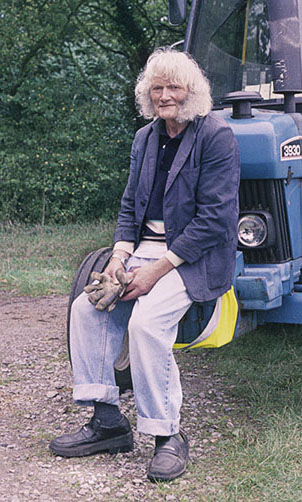 Topley’s is named after
the late Rob Topley, then our oldest working party member,
who celebrated his 90th birthday during one workparty. The coupe was coppiced
in the winter of 1997–98, and the photographs here of the finished coupe were
taken in July 1999.
Topley’s is named after
the late Rob Topley, then our oldest working party member,
who celebrated his 90th birthday during one workparty. The coupe was coppiced
in the winter of 1997–98, and the photographs here of the finished coupe were
taken in July 1999.
Because these photos were scanned from 35mm slides, the quality is not as
good as we now get from a digital image.
Click on the coloured links to see the hidden images. Note that the first coloured
link typically displays the first image in the set, so you will see no change unless you go back to it!
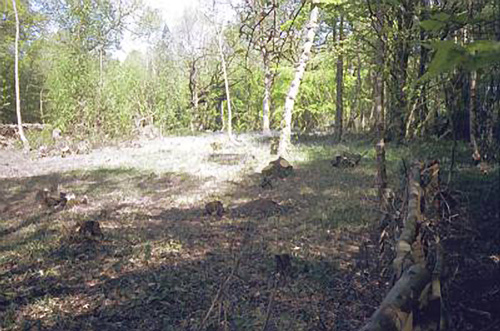 The first two
of images show two views of the coupe, from the
south-west, and from the south-east.
The next two images show the cordwood
at the southern boundary (with the power cables visible in the background)
and the pile of brash along the
eastern boundary.
The first two
of images show two views of the coupe, from the
south-west, and from the south-east.
The next two images show the cordwood
at the southern boundary (with the power cables visible in the background)
and the pile of brash along the
eastern boundary.
The final image is of one year after coppicing. There is a vigorous
sward of low ground flora,
especially the Common Cow-wheat on which the Heath Fritillary feeds.
Removing Standard Trees
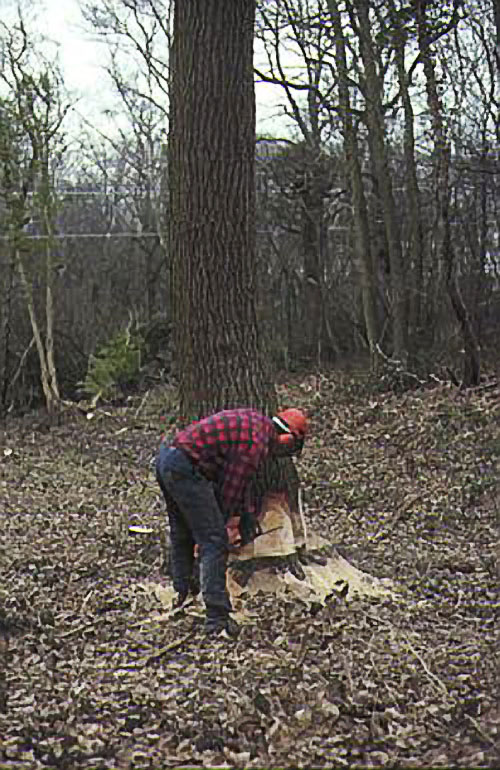 When
Topleys was reviewed for coppicing, the Trust conservation staff
considered that the number of mature standards was excessive. The optimum
number for wildlife is around eight per hectare. By this criterion, Topleys
had at least six too many. Thus a number of oaks were earmarked for felling
during the 1997–98 season.
When
Topleys was reviewed for coppicing, the Trust conservation staff
considered that the number of mature standards was excessive. The optimum
number for wildlife is around eight per hectare. By this criterion, Topleys
had at least six too many. Thus a number of oaks were earmarked for felling
during the 1997–98 season.
A cut is made low down on the
side of the tree on which it is intended to fall. then a
second triangular cut is made, with the
lower face parallel to the ground.
Further cutting is done on the side that the
tree will not be falling.
As the tree falls,
it does so away from the chainsaw operator.
The side branches are now removed and are stacked
nearby. The felled tree can now be sawn into convenient logs that
can be moved by tractor to an
adjacent area (image below) where it
can be further processed.
Planking
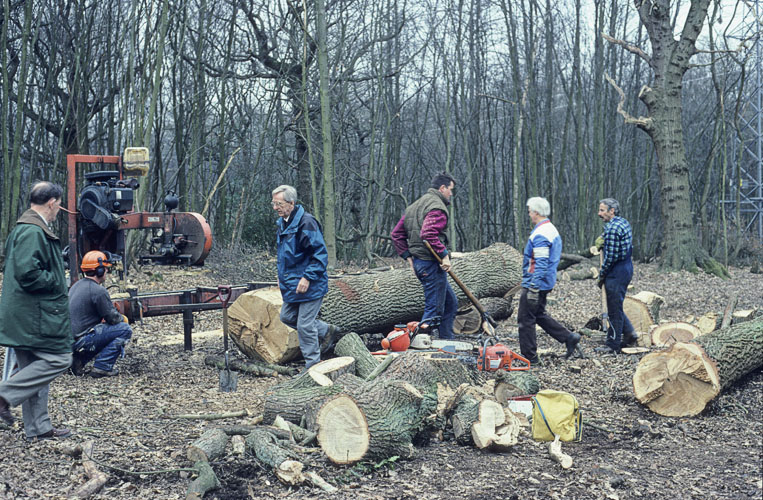
To facilitate removal of the timber, it is convenient to convert the
trunks to planks on site, using a mobile planking machine. Each trunk
is brought next to the planking
machine and then winched onto
the platform and secured into place.
The planking saw is then brought
into play.
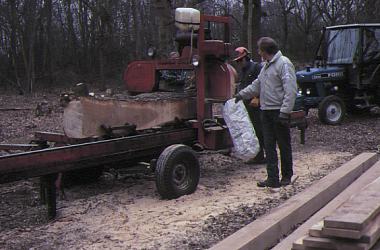 This generates considerable quantities of sawdust which
can be collected
The first
slices taken from the side of the log are removed to one side. The
planks proper are then stacked
ready for removal.
This generates considerable quantities of sawdust which
can be collected
The first
slices taken from the side of the log are removed to one side. The
planks proper are then stacked
ready for removal.
Chipping
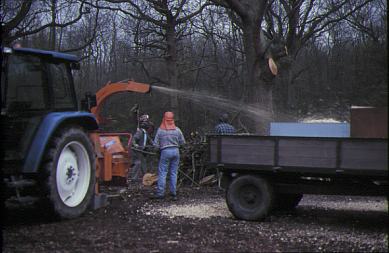 The wood that cannot be converted to planks, and which is not
intended cordwood or the habitat pile, is converted to
wood chips by a chipping
attachment. These chips can be
collected and sold as a garden
mulch.
The wood that cannot be converted to planks, and which is not
intended cordwood or the habitat pile, is converted to
wood chips by a chipping
attachment. These chips can be
collected and sold as a garden
mulch.
 Topley’s is named after
the late Rob Topley, then our oldest working party member,
who celebrated his 90th birthday during one workparty. The coupe was coppiced
in the winter of 1997–98, and the photographs here of the finished coupe were
taken in July 1999.
Topley’s is named after
the late Rob Topley, then our oldest working party member,
who celebrated his 90th birthday during one workparty. The coupe was coppiced
in the winter of 1997–98, and the photographs here of the finished coupe were
taken in July 1999. The first two
of images show two views of the coupe, from
The first two
of images show two views of the coupe, from  When
Topleys was reviewed for coppicing, the Trust conservation staff
considered that the number of mature standards was excessive. The optimum
number for wildlife is around eight per hectare. By this criterion, Topleys
had at least six too many. Thus a number of oaks were earmarked for felling
during the 1997–98 season.
When
Topleys was reviewed for coppicing, the Trust conservation staff
considered that the number of mature standards was excessive. The optimum
number for wildlife is around eight per hectare. By this criterion, Topleys
had at least six too many. Thus a number of oaks were earmarked for felling
during the 1997–98 season. 
 This generates considerable quantities of sawdust which
This generates considerable quantities of sawdust which
 The wood that cannot be converted to planks, and which is not
intended cordwood or the habitat pile, is converted to
The wood that cannot be converted to planks, and which is not
intended cordwood or the habitat pile, is converted to